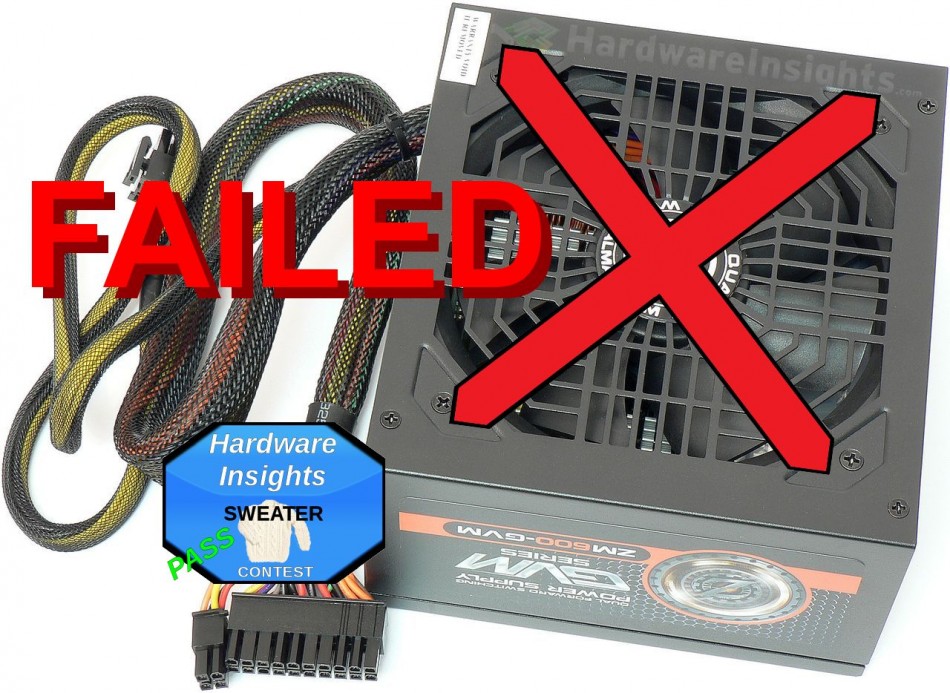Contents
- 1Introducing the Zalman ZM600-GVM
- 1.1Packaging and accessories
- 2Connectors & cabling
- 2.1Casing & cooling
- 3Input filtering
- 4Primary side
- 4.1+5 V stand-by rail
- 5Secondary side
- 5.1Build quality
- 6Load testing
- 6.1Loading +5 V SB
- 6.2Voltage hold-up time
- 6.3Combined loading
- 6.4Combined loading ripple
- 6.5Crossloading, overloading
- 6.6Crossloading, overloading ripple
- 6.7Fan speed and temperatures
- 7Conclusion and evaluation
- 7.1Thanks
- 7.2Discussion
Conclusion and evaluation
The Zalman ZM600-GVM did not pass the combined and crossload testing in accordance with the ATX specification, so according to my evaluation methodology, it is not deserving of an evaluation. This unit is mostly the same as the brother model, ZM500-GVM. Well, it makes sense after all. So most of its drawbacks as well as advantages are the same. The voltage regulation is the same, under combined loading it stays within 3 %, under crossload it is a tragedy. There is no OCP or OTP, but the OPP works and turns the unit off at about 830 W. Having basically the same silicon, the unit also has about the same efficiency, but under high overload or in sweater (that also means any other bad cooling conditions), it gets quite hot.
Fortunately the unit has high-quality capacitors which can survive many years even at high temperatures, and what’s more, Zalman covers the unit with five-year warranty. But the problem with high-frequency high-amplitude ripple (or interference, maybe oscillation, I do not know what causes it) persists. For that reson, under test four and all the ones after it, the unit dropped out of ATX specification on ripple. And there is one more drawback – as the unit uses the same 330μF capacitor, the hold-up time is now even shorter at 14.2 ms, which is already under the ATX minimum value.
So once again, this unit is much better than previous ones I saw from Zalman, but it is still not good. And even if it was in spec, still it only uses aging group design platform, while competition is strongly pushing new platforms with synchronous rectification and DC–DC converters within the same price segment. Often even with higher efficiency, for example the SilentiumPC Supremo M1 Gold. This unit is slowly becoming discarded, but SilentiumPC already has new platforms replacing them.

 Pros Pros |
+ working OPP + quality capacitors + modular cabling + longer warranty + OK efficiency (besides low loads/crossload) |
 Cons Cons |
− bad crossload voltage regulation − may run warmer − incredibly bad ripple suppression − low efficiency at crossloads and low loads − short hold-up time |
 Be aware of… Be aware of… |
/?\ buying this unit |
Thanks
I thank the Zalman company for providing the Zalman ZM600-GVM unit.

